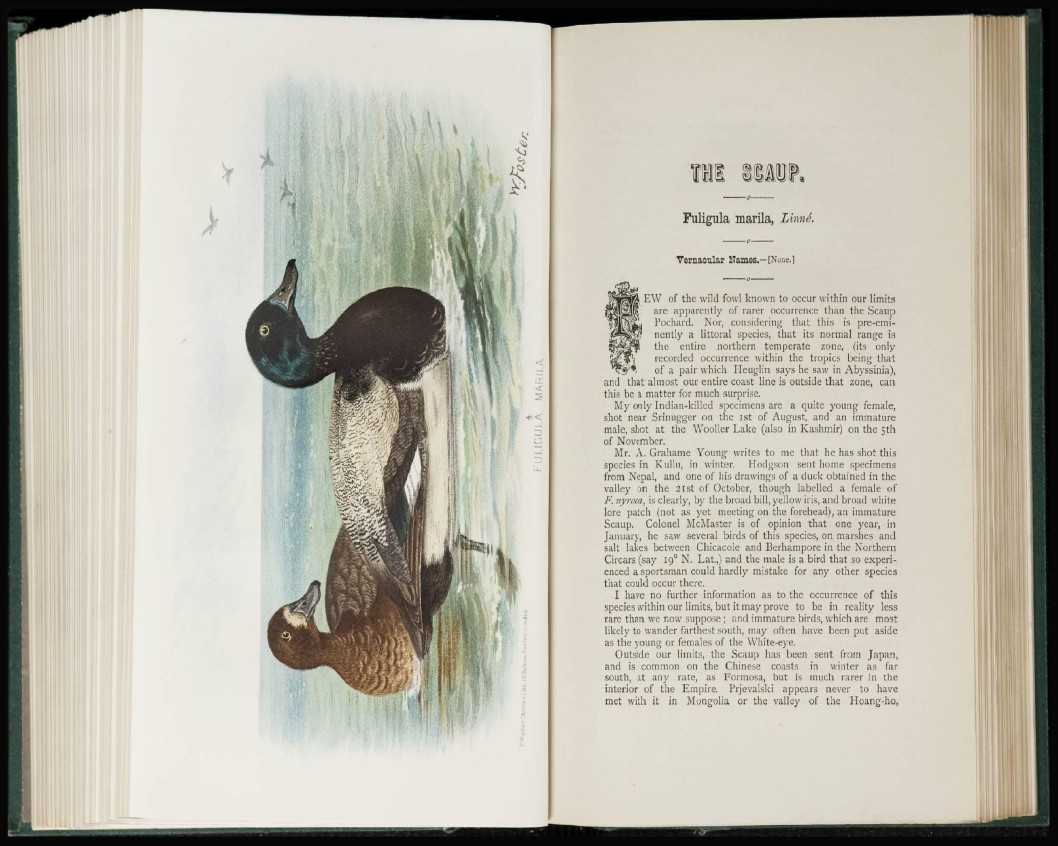
Fuligula marila, Linné.
Vernacular Hamos.—[None.]
EW of the wild fowl known to occur within our limits
arc apparently of rarer occurrence than the Scaup
Pochard. Nor, considering that this is pre-eminently
a littoral species, that its normal range is
the entire northern temperate zone, (its only
recorded occurrence within the tropics being that
of a pair which Heuglin says he saw in Abyssinia),
and that almost our entire coast line is outside that zone, can
this be a matter for much surprise.
My only Indian-killed specimens are a quite young female,
shot near Srinugger on the ist of August, and an immature
male, shot at the Wooller Lake (also in Kashmir) on the 5th
of November.
Mr. A. Grahame Young writes to me that he has shot this
species in Kullu, in winter. Hodgson sent home specimens
from Nepal, and one of his drawings of a duck obtained in the
valley on the 21st of October, though labelled a female of
F. nyj'oca, is clearly, by the broad bill, yellow iris, and broad white
lore patch {not as yet meeting on the forehead), an immature
Scaup. Colonel McMaster is of opinion that one year, in
January, he saw several birds of this species, on marshes and
salt lakes between Chicacole and Berhampore in the Northern
Circars (say 190 N. Lat.,) and the male is a bird that so experienced
a sportsman could hardly mistake for any other species
that could occur there.
I have no further information as to the occurrence of this
species within our limits, but it may prove to be in reality less
rare than we now suppose ; and immature birds, which are most
likely to wander farthest south, may often have been put aside
as the young or females of the White-eye.
Outside our limits, the Scaup has been sent from Japan,
and is common on the Chinese coasts in winter as far
south, at any rate, as Formosa, but is much rarer in the
interior of the Empire. Prjevalski appears never to have
met with it in Mongolia or the valley of the Hoang-ho,